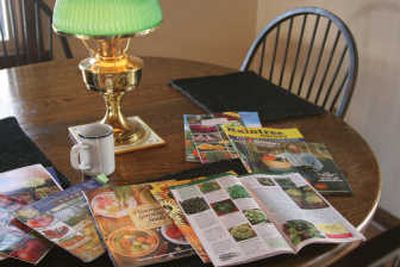Do your homework with mail-order plants

The catalogs are filling our mailboxes and that means that spring can’t be too far off. All those pretty pictures and the “you can grow anything” hype makes it sound like our gardens will be so easy to do come spring.
Mail-order gardening has grown steadily in the past few years. The advent of reliable, fast shipping services has made it relatively easy to get plants and other garden goodies delivered to your door.
Ordering garden stuff, particularly live plants, isn’t like going to the local nursery. There are definite differences.
Know before you order
When you order live plants from catalogs or online you don’t see exactly what you are getting. What you see is the prettiest picture of the best-looking plant the photographer could find. What you will get are small plants in maybe a four-inch square pot. They will often be cut back to keep them from getting damaged in transit or dormant with bare branches. If they weren’t packed well, they could be all over the box.
Good catalogs list the hardiness zones for each plant. Saying a plant is “hardy” doesn’t tell you a thing. Hardy where? California? The Pacific Coast? Vegetable catalogs should list the days to maturity on each selection. Because we have a short-season climate, it doesn’t matter how pretty that tomato looks if it won’t ripen in 70 days or less.
Each catalog entry should give you detailed information on the plant’s preference for sun or shade, what kind of soil the plant needs, how much water it requires and special notes on disease and insect resistance. Some catalogs will indicate that plants are deer- and critter-resistant or attract birds or butterflies.
Shipping dates should be timed so that your order isn’t shipped too early and won’t freeze en route. Be sure you understand what the terms of the company’s guarantee and return policies are. They can be very different between companies.
Read the fine print
Some catalogs will have notes on certain plants saying they can’t be shipped to this state. These restrictions, or quarantines, are in place in Washington to specifically prevent the introduction of Japanese beetle, European corn borer, fruit tree and grape diseases and a specific list of noxious weeds that could do severe damage to our region’s agriculture and ecology.
Unpack carefully
When you get a shipment, unpack it immediately to check for damage and that the order is correct. Read the instructions for temporary storage of the plants but plan on planting them within a few days.